It was 20 years ago today
The Body Then & Now
It was 20 years ago today… the untold story of the Armenian Church Youth Ministries Center
That the Youth Ministry opened its doors in Glendale, California. This was not anywhere in Glendale. It was in section of town, where, as the co-founder of that ministry, Dr. Deacon Hrair Dekmejian, Professor of Political Science at the University of Southern California called it, “A place that Armenian organizations have ignored and forgotten.” It was a place where education, identity and prayer came together.”
On April 13, 2003, the doors opened to the Youth Ministry Center with the celebration of the Palm Sunday Holy Divine Liturgy. It was standing-room only. I was the celebrant. Dr. Dekmejian was the choir leader. There was an energy in the room reminiscent of what might be found in the early evangelical era of the Christian Church – during the Apostolic times. To give you a hint, Dr. Dekmejian refused to have choir members don robes, so that like the Church of the first century, the people – the congregation – would sing the praises of the Lord rather than a select few. That tradition became the hallmark of this Church.
But this was no ordinary Church, because that one-hour on Sunday morning was the smallest portion of its entire ministry.
This was an old building – a church from the 1950s – which had been converted, renovated and remodeled with an altar area and assembly hall that would soon become a hang-out for kids after school. Across from a cluster of public schools in Glendale, where at the time had a 30+% population was Armenians, there was an opportunity to minister the Christian faith to countless of young people. Students from USC, UCLA and CSUN would come to mentor younger brothers and sisters. Gang members would come for counseling, with Bibles distributed next to candle areas. Conferences on violence would take place not only with scholars, but troubled youth living on the streets. The Catholicos of All Armenians, His Holiness Karekin II would come to learn about the center during his visit in 2005, and was given a “game plan” for the potential of the Armenian Church. We would feed the homeless and clothe the naked. I would journey off to Rwanda and return with survivors of the Rwandan Genocide to speak and share their stories of resurrection. From that small church, we would journey to both sides of Ararat and celebrate the 100th anniversary of our DNA returning to the homeland. We would also learn about the politics of running a Church with a mission, much like Jesus learned when he dared to say the Church was more than a building. In fact, it was there, at the Armenian Church Youth Ministry Center that Epostle.net was cultivated.
I was honored to have led this congregation and ministry for 15 years of this experiment that pushed the limits and the ceiling of the Armenian Church. Our game plan, what some might refer to as a business plan came from Holy Scripture” “To preach the gospel to the poor… ]to heal the brokenhearted, to proclaim liberty to the captives, and recovery of sight to the blind, to set at liberty those who are oppressed; To proclaim the acceptable year of the Lord.”
On these days following Easter, our Daily Messages are looking at the Body of Christ, then and now. I’d like to share with you the story of the Armenian Church Youth Ministry Center, because it was the Armenian Church now, patterned after was then: the Apostolic Church.
Join me on this journey, called “It was 20 years ago today: The untold story of the Armenian Church Youth Ministry Center.” I guarantee, this story will not disappoint. Most importantly, it presents thoughts on what the Christian mission, ministry and response is in a world void of God and Love. This is the story of what the Armenian Apostolic Church has to offer the world.
The story is a podcast and available on your favorite podcatcher, on social media and of course, on the mother ship, Eposte.net: Apostolic Evangelism for an Electronic and Expanding Universe.
I look forward to having you with me tomorrow on our daily messages. Let us pray from the 11th hour of St. Nersess Shnorhali’s prayer, “Jesus, Wisdom of the Father, grant me your wisdom so that I may think, speak and do that which is good in your sight. Save me from evil thoughts, words and deeds. Have mercy on all your creatures and on me a sinner. Amen.


